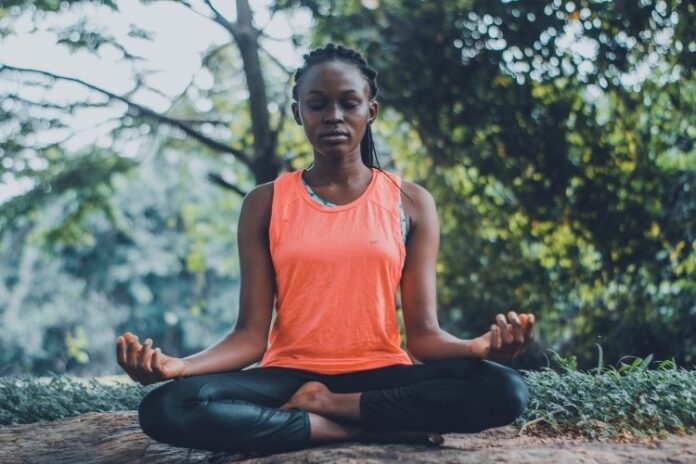Meditation – what is it? Everybody seems to have an opinion on the practice, but very few people actually understand the intricacies of what it involves. Don’t worry, you’re going to learn everything you need in this short guide!
What’s Meditation?
Ask 100 different people about meditation, and you’ll probably get 100 different answers about what it involves. So, let’s clear up the basics first. Meditation is the idea of connecting with yourself and being present in a given moment. In today’s world, it’s easy to get caught up with work, deadlines, pressure, stress, and the hustle and bustle of daily life. Therefore, meditation aims to reconnect you with yourself and appreciate the fleeting nature of single moments.
When meditating, you’ll attempt to remove all distractions. If a thought comes to mind, instructors encourage you to push it to one side and return to the exercise instead. With no allowance for distractions, you live in the moment and enjoy a new calming sensation as it takes hold.
If you want to try meditation, you shouldn’t expect wonders in the first session. Though a powerful exercise, nobody masters the art inside one session. Instead, commit to several sessions and pursue meditation calmness.
Benefits of Meditation
Why bother with meditation? Why take 20 minutes from your day to perform this sort of exercise when you have a hectic schedule anyway? You may have seen them already, but there are a whole host of benefits when it comes to meditation.
For example, one benefit is that it allows a new perspective on life’s many challenges. Especially during a stressful situation, you can enter this state of calmness and create a plan to attack the challenge. What’s more, the very act of meditation helps others to overcome stress and manage these difficult situations.
Elsewhere, some benefit from an increased sense of self-awareness while others find it easier to focus on the present and not get carried away by the future after meditation. You might also benefit from a more positive outlook, increased patience, better concentration, and boosted creativity.
Alongside the appropriate medication and therapy, many doctors are also now suggesting meditation for health conditions. For example, this includes depression, anxiety, heart disease, asthma, tension headaches, high blood pressure, and sleep deficiency.
Types of Meditation
Though ‘meditation’ is often used as a blanket term, there are many different types. Perhaps the most popular for mental health is mindfulness meditation, and this is where the user focuses on being present and aware of their surroundings. As mentioned earlier, you can address thoughts and emotions without reacting to them too strongly. Normally, you’re encouraged to focus on the flow of breathing so that you aren’t engaging too much with each thought/emotion.
In other cases, participants enjoy guided meditation. This time, you’ll visualise what you want to achieve in life and keep a clear image in your mind. This is particularly useful when working towards goals; you can picture these goals in your mind and use this as a focal point for the meditation. Whenever your thoughts stray, you’ll always come back to your breathing and the image in your mind.
Getting Started
If you want to try meditation, choose a specific type, and allow yourself some time. Sit down (this doesn’t have to be crossed-legged, despite common belief), shop Australian yoga bolsters here, you are going to want to wear comfortable clothing, and take deep breaths. Focus on your breathing or start with an image – you might want to visualise your future life or a specific achievement that you’re working towards. Take in the smells, sounds, and textures as you meditate.
Above all else, don’t give up. You might not get everything right in the first session, but you will enjoy the benefits if you persist with sessions!






